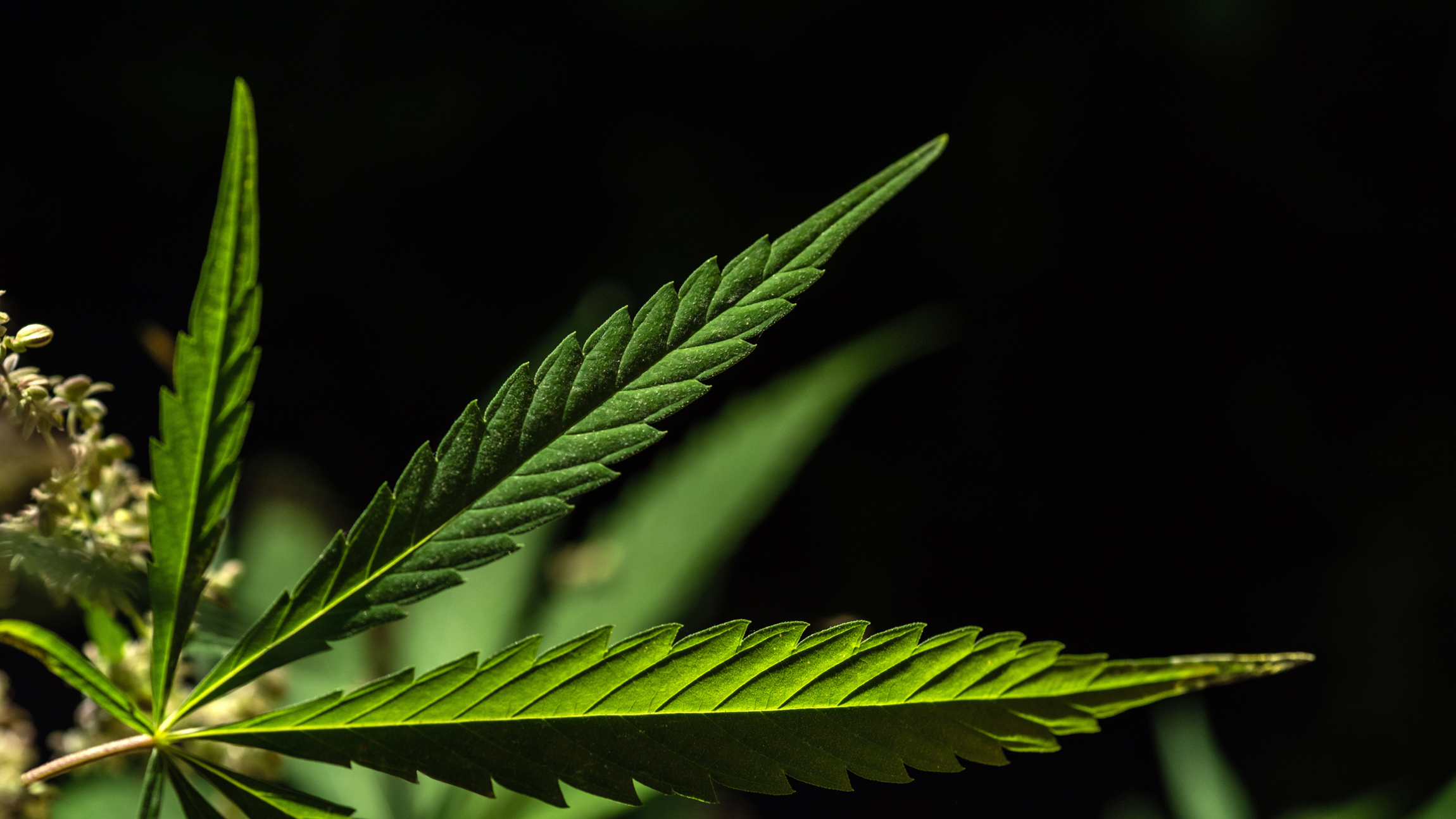Introduction
Despite concerns about labour market health and a government shutdown, US equities climbed a wall of worry in September. For the Ninepoint Cannabis & Alternative Health Fund, there was continued resilience in the revitalized US cannabis sector, supported by President Trump’s continued references to rescheduling cannabis to a Schedule III drug. In our report, we remind investors about why we hold our key picks for the cannabis sector: GTII and TRUL. September witnessed solid gains for various health-related names in the portfolio. The initial fears of operational challenges for pharma, diagnostic testing and clinical research that drove healthcare equities lower have become far less ominous than anticipated. As a result, we have seen some healthcare sub-sectors rebound positively.
Our Equity Market View
Markets remain preoccupied with trade tensions, inflation data, labor market health, and the US Federal Reserve’s policy path. Key upcoming catalysts for market participants include the October 15 inflation report for the month of September, initial jobless claims on October 16, and the next FOMC meeting on October 28/29. CPI is expected to re-accelerate into year-end. The US economy has reported strong real GDP growth, following a short contraction in Q1, growth in Q2 bounced back to 3 - 3.3% annually, and the Atlanta Fed’s GDP now model currently projects Q3 growth at a stable 3% pace. In addition to consumer spending and imports, business investment also contributed to this GDP strength. The FED is becoming more concerned about a slowing labor market than high inflation, indicating they are likely to cut interest rates again in October and at their final meeting of the calendar year in December. Markets are beginning to anticipate that the FED will continue to lower interest rates, which could further boost borrowing, investment, and the economy’s momentum for the rest of 2025 and into 2026. Simultaneously, global fiscal policies amongst major economies are loosening, increasing global liquidity. Canada continues to lack responsible leadership, and we are at risk of managing that scenario. We still view this as a broadly favorable environment for risk assets.
As overall equity growth continued to broaden, September witnessed solid gains for various health-related names in the portfolio. From a top-down perspective, equity markets continue to climb higher despite worries on jobs, tariffs and the strength of the US dollar. For healthcare investors, the beginning of the year saw rising fears related to the new administration and the policy direction to come from Health & Human Services Secretary Robert F. Kennedy Jr. The initial fears drove healthcare equities lower, forecasting challenges in pharmaceuticals, diagnostic testing and clinical research. Over the months, what has transpired is less ominous and as a result, we have seen some healthcare sub-sectors rebound nicely. Fund performance in September benefited from strong returns from National Vision (EYE) +26%; Eupraxia (EPRX) +10.5% and Johnson & Johnson (JNJ) +4.5%.
The Ninepoint Cannabis & Alternative Health Fund is focused on the key drivers affecting cannabis, health and wellness, pharma and consumer health sectors. We invest in companies that are embracing new modalities, innovative technology and effective distribution. We believe that people globally are becoming more aware of alternative treatments and seeking out the best providers of select services. Our goal is to invest in those companies best positioned to take advantage of these macro changes.
CBD: US Cannabis & The President’s Truth Social Post
On Sunday Sept 28, President Trump posted a video produced by The Commonwealth Project on his Truth Social platform that highlights the medical benefits related to CBD.
The Commonwealth Project is a lobbyist group that strongly supports the HHS rescheduling proposal to move cannabis from a Schedule I to a Schedule III drug. The focus of the video involved a discussion of various medical treatments for seniors where CBD, both cannabis and hemp-derived strains, are being used to treat various conditions from chronic pain, Huntington’s disease, Tourette syndrome, Alzheimers, Arthritis, neurodegenerative disorders, Parkinson's, as well as cancer symptons, emphasizing its potential to improve healthcare outcomes and reduce overall healthcare costs.
The video discusses the human body’s endocannabinoid system and how it declines with age, and how CBD restores the system’s balance, reduces pain, improves sleep and lowers stress as people grow older. What was also noteworthy after going through some of the medical ailments and opportunities for treatment, the video discusses a policy aspect of having Medicare cover the cost of CBD for seniors. It was this proposal that led to an addition to their position in the sector. We have a sitting president, discussing medical benefits, cost coverage and encouraging further research on those benefits so that doctors can be more comfortable prescribing cannabis to seniors.
Cannabis Sector Outlook
One of the subsectors that continues to stay elevated is the US cannabis. September was an important follow-up month where values stabilized after a strong uptick in August. Combined with market flows, there is renewed enthusiasm based on the prospect of federal legislative changes with respect to medical cannabis and hemp-derived CBD. That narrative has been supporting the sector for almost two months. Most recently, the sector was aided by a video posted to Truth Social, the social media platform founded by President Trump, extoling the virtues of CBD for a variety of medical applications for seniors. Given the links from the White House to Truth Social, there is cautious optimism for the sector. Investors still find it difficult to gauge the degree of enthusiasm for cannabis reform in the Trump administration, as individuals appointed by the White House have very different views on the matter. Terry Cole (DEA administrator), for example, is on record as being a staunch opponent of cannabis reform. Other senior administration officials, such as HHS head RFK Jr., are more supportive. Ultimately, we believe it will require President Trump’s influence, so we are encouraged that the President shared this post. As with all things political, the timing of any decision is driven by factors that have little to do with the issue in question and is therefore difficult to predict.
We continue to hold overweight positions in US cannabis leaders Green Thumb Industries (GTII) and Trulieve Cannabis (TRUL) as we believe both companies are well-positioned in the current patchwork of US regulations, as well as being ready for a re-scheduled US cannabis landscape.
Green Thumb Industries (GTII) is a well-managed, efficient operator based in Illinois. The GTII model focuses on wholesale distribution of its branded products as well as its 108 RISE retail dispensary network across the 14 states, with a total of 20 cultivation and processing facilities where it has licensed operations. GTII is an industry leader, generating annual revenues of over $1.1 billion with adj EBITDA margins in the 28%+ range, and has virtually no debt in its most recent fiscal year. Also noteworthy is that GTII is the first cannabis company to initiate a share buyback, its Board approving annual buyback programs of $50 million allocations in each of the last two fiscal years.
Trulieve Cannabis (TRUL) is the largest retailer in US cannabis with 231 dispensaries across FL, PA, AZ, WV, GA, MD, CT, OH, CO. It has the leading market position in the large vertically integrated FL medical market. Overall TRUL generates $1.3 billion in annual revenues and maintains an industry leading 60% gross margin supported by its 4 million sq ft of cultivation and processing. Its other state markets continue to grow and expand its brand distribution. In terms of balance sheet strength, the company has free cash flow that it is using to reduce indebtedness. In addition, TRUL is leading the industry in advocacy; in FL leading ballot initiatives to legalize cannabis; while at the federal level working with Republican law makers in Washington to understand the positive medical benefits of re-scheduling.
COSTCO Q4-25 & Full Year Results
Top ten fund holding, COSTCO (COST) released strong Q4 and full year results that once again surpassed analyst estimates. Sales for the quarter were up 8% to $84.4 billion from $78.2 billion YoY. For the year, sales increased over 8% for the company’s fiscal year; generating $269 billion vs $249 billion in fiscal 24. Net income for the físcal year was $8.099 billion, $18.21 per diluted share, compared to $7.367 billion, $16.56 per diluted share in fiscal 2024. Same-store sales, an industry metric that takes out one-time factors such as store openings and closures, rose 6.4% excluding the impact from changes in gas prices and foreign exchange. Revenue growth is being achieved by COST as it continues to make inroads with younger members, re-merchandising due to tariffs as well as enhancing its digital sales platform. For the year, e-commerce sales increased 13.5%, exceeding $19 billion, representing a little over 7% of Costco’s net sales for the year.
On its earnings call, COST CEO Ron Vachris told investors that the company opened 27 new warehouses and plans to open another 35 warehouses in the 2026 fiscal year. In reaction to its strong financial results, beating analyst estimates while continuing its growth trajectory, investors were not impressed. The stock has faded through much of September as investors are concerned that same store sales growth isn’t as strong as it was in prior periods. However, one must consider the changes in inflation that have occurred over the last few years when comparing sales growth. The portfolio team continues to see COST as a key holding that defies other retail weakness with its broad product and service offering all at low prices. We need to remember revenues from membership fees are the most important metric for Costco, not comparable sales. Costco ended Q4 with 81 million paid memberships, up 6.3% year over year and a renewal rate on memberships of 90%.
Costco currently operates 914 warehouses, including 629 in the United States and Puerto Rico, 110 in Canada, 42 in Mexico, 37 in Japan, 29 in the United Kingdom, 20 in Korea, 15 in Australia, 14 in Taiwan, 7 in China. Costco also operates e-commerce sites in the U.S., Canada, the U.K., Mexico, Korea, Taiwan, Japan, and Australia. With its efficiency and curated offerings, Costco helps consumers find organic and health-based products at more affordable prices.
Options Strategy
Since the inception of the option writing program in September 2018, the Fund has generated significant income from options premium of approximately CAD$5.27 million. We will continue to utilize our options program to look for attractive opportunities given the volatility in the sector and to assist in rebalancing the portfolio in favor of names we prefer as we strongly believe that option writing can continue to add incremental value going forward.
Ninepoint Cannabis & Alternative Health Fund - Compounded Returns* as of September 30, 2025 (Series F NPP5421) | Inception Date - August 4, 2017
1M |
YTD |
3M |
6M |
1YR |
3YR |
5YR |
Inception |
|
|---|---|---|---|---|---|---|---|---|
Fund |
-1.33% |
0.43% |
18.24% |
13.05% |
-18.62% |
-8.66% |
-8.72% |
1.23% |
Statistical Analysis
Fund |
|
|---|---|
Cumulative Returns |
10.50% |
Standard Deviation |
27.18% |
Sharpe Ratio |
0.11 |
The Ninepoint Cannabis & Alternative Health Fund, launched in March of 2017 is Canada’s first actively managed mutual fund with a focus on the cannabis sector and remains open to new investors, available for purchase daily.
Charles Taerk & Douglas Waterson
The Portfolio Team
Faircourt Asset Management
Sub-Advisor to the Ninepoint Cannabis & Alternative Health Fund

 September 30, 2025
September 30, 2025

